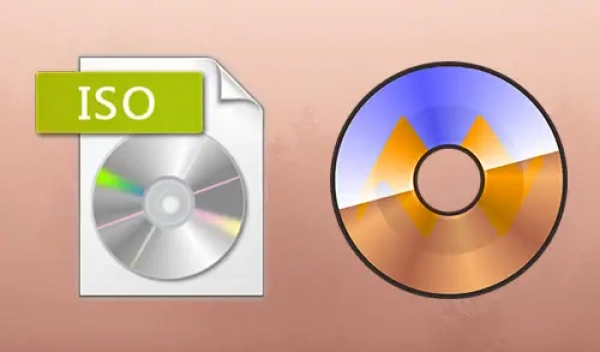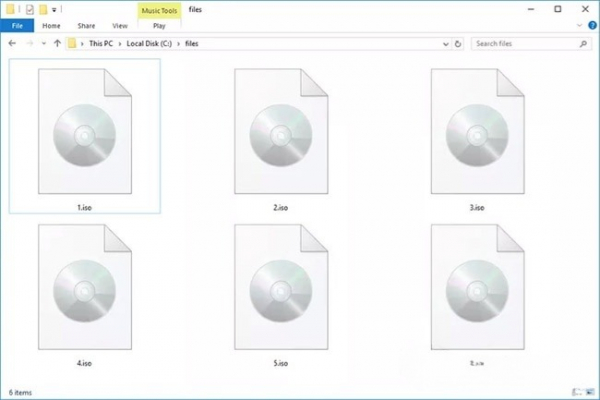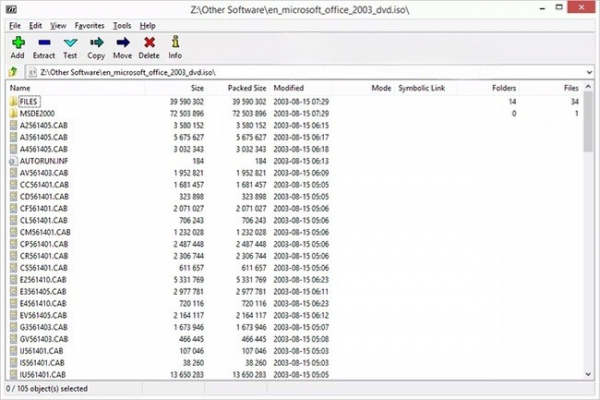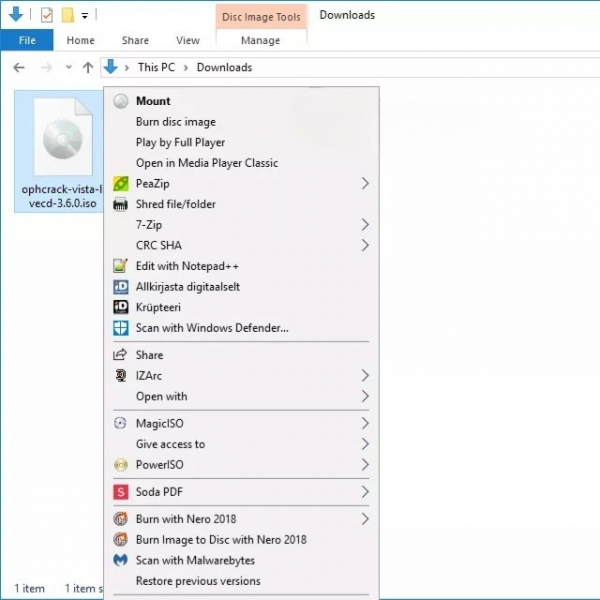What is an ISO File? How to Extract an ISO File?
An ISO file, often referred to as an ISO image, is a single file that serves as a complete representation of a CD, DVD, or BD. The entire contents of a disc can be precisely copied into a single ISO file.
What is an ISO File?
An ISO file is a unique digital file that contains all the information present in an optical disc. This means all the data within the ISO file retains the same structure as the optical disc from which it was created, as it must maintain the original file system.

This type of file is used as a virtual CD-ROM. They are commonly employed in emulators to replicate CD images or to burn disk images of installation software.
Consider an ISO file like a box containing all the essential parts needed to build something (similar to a child's construction toy set). This box holds the content inside it, and once all this content is taken out and assembled together, it becomes the thing you want to use.
An ISO file operates in this manner. The file itself only has value when it is opened, unfolded, and used.
Note: The .ISO file extension used by ISO images is also employed by Arbortext IsoDraw Document files. These are CAD drawings used by PTC Arbortext IsoDraw. However, they are unrelated to the ISO format discussed in this article.
Where Will You Encounter ISO Files?
ISO images are commonly used for distributing large programs over the Internet, due to the fact that all the installation files for a program can be neatly contained as a single file.

An example can be observed with the free Ophcrack password recovery tool (which contains an entire operating system and some software). Everything making up the program is enclosed in one file. The file name for the latest version of Ophcrack might look like this: ophcrack-vista-livecd-3.6.0.iso.
Ophcrack certainly isn't the only program utilizing ISO files. Many types of programs are distributed this way. For instance, most bootable antivirus programs also use ISOs, like the ISO file bitdefender-rescue-cd.iso, used by Bitdefender Rescue CD.
In all the above examples, and thousands more in reality, every single file requiring any tool to run is included within the single ISO image. As mentioned, this makes the tool very easy to download and also makes it easy to write to a disk or another device.
Even with Windows 10, and previously Windows 8 and Windows 7, users could purchase directly from Microsoft in ISO format, afterwards, the file would be ready to be extracted to a device or mounted in a virtual machine.
How to Burn an ISO File
The most common way to use an ISO file is to burn it to a CD, DVD, or BD. This process is different from writing music or document files to a disc because your CD/DVD/BD burning software must "assemble" the contents of the ISO file onto it.
Windows 10, 8, and 7 can write an ISO image to a disc without needing any third-party software. You just need to double-click the ISO file and then follow the prompts that appear.
Note: If you want to use Windows to open an ISO file but it's been associated with a different program (meaning Windows doesn't open the ISO file when you double-click it), open the file's properties and change the program that will open the ISO file to isoburn.exe (it's stored in the C:\Windows\system32\ folder).
The same logic applies when writing an ISO file to a USB device, a more common method at present compared to optical drives, which are becoming less widespread.
Writing an ISO image is not an option for some programs; it's a necessity. For example, many hard drive diagnostic tools can only be used outside the operating system. This means you'll need to write the ISO to some form of removable media (like a disk or flash drive) where your computer can boot from it.
Although less common, some programs are distributed as ISO files but they're not designed to boot from them. For example, Microsoft Office is often supplied as an ISO file and designed to be written or mounted, but since it doesn't need to run outside of Windows, it doesn't need to boot from it (nothing will happen if you try).
How to Extract an ISO File?
If you don't wish to write an ISO file to a disc or USB storage device, most compression/decompression software, like the free 7-Zip and PeaZip programs, will extract the contents of the ISO file into a folder.
(Download link for PeaZip: http://www.peazip.org/)
Extracting an ISO file will copy all the files from the image directly into a folder that you can browse through, just like any folder you find on your computer. Although the new folder generated cannot be directly written to a device, as discussed above, you should be aware that this may be beneficial.
For instance, suppose you've downloaded Microsoft Office as an ISO file. Instead of writing the ISO image to a disc, you can extract the installation files from the ISO and then install the program as usual, just like you would with any other program.

Each extraction program requires different steps. Here is a quick way you can extract an ISO image using 7-Zip: Right-click the file, select 7-Zip, and then select the option Extract to "\".
How to Create an ISO File
Some programs, many of which are free, allow you to create your own ISO files from a disc or a collection of files you select.
The most common reason to build an ISO image is when you're interested in backing up a software installation disc or even a movie DVD or Blu-ray.
How to Mount an ISO File?
Mounting an ISO file that you've created or downloaded from the Internet is like tricking your computer into thinking the ISO file is an actual disc. In this way, you can "use" an ISO file just like it were on a real CD or DVD, except you don't waste a disc, or time burning one.
A common situation where mounting an ISO might be useful is when you're playing a video game that requires the original disc be inserted. Instead of actually inserting the disc into your optical drive, you can mount the ISO image of the game disc you previously created.
Mounting an ISO is typically as simple as opening the file with a so-called "disk emulator" and then choosing a drive letter to represent the ISO file. Though this disk letter is a virtual drive, Windows still treats it as a real drive, and you can use it as one too.
One of my favorite free programs for mounting ISO images is WinCDEmu (Download link: http://wincdemu.sysprogs.org/download/), because it's easy to use and comes in a portable version. Additionally, you might want to check out Pismo File Mount Audit Package (Download link: http://pismotec.com/download/), which is quite a good option.
If you're using Windows 10 or Windows 8, fortunately, you can mount an ISO into your OS! Just press and hold or right-click on the ISO file and select Mount. Windows will automatically create a virtual drive for you without needing additional software.

Note: Although mounting an ISO file can be very useful in some situations, note that the virtual drive won't be usable anytime the operating system isn't running. This means it's completely pointless to mount an ISO file you intend to use outside of Windows (like what's required with some hard drive diagnostic tools and memory testing programs).
Frequently Asked Questions about ISO Files
1. How do I run an ISO file on Windows 7?
In Windows 7, you'll need to download a third-party application like WinISO or WinCDEmu to mount and run an ISO file. After you download the application, allow the app to install its drivers, then double-click on the ISO file you wish to open and follow the prompts to mount and open your desired ISO file.
2. How do I download a Windows 10 ISO file?
To download a Windows 10 ISO file, visit Microsoft's Windows 10 Disc Image Download page and verify that your computer meets the installation requirements. Choose the correct edition and product language, then select either 64-bit Download or 32-bit Download.
https://www.microsoft.com/en-us/software-download/windows10
3. Can ISO files be booted?
An ISO file combines all the Windows installation files into one uncompressed file. If you choose to download the ISO file so you can create a bootable file from a DVD or USB drive, copy the Windows ISO file onto your drive and then run the Windows USB/DVD Download Tool.
